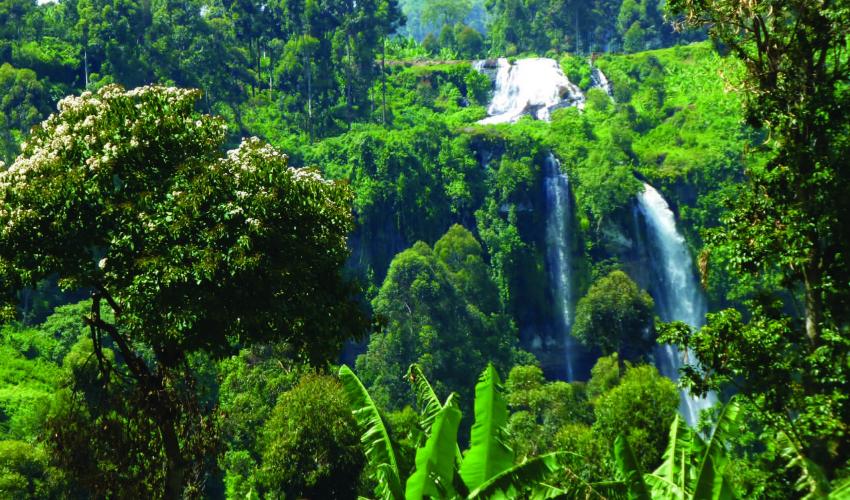What can be done?
IUCN’s forest work tackles the role of trees and forests in building resilience to climate change in several ways:
- Combatting deforestation and forest degradation in areas of high biodiversity and cultural significance, such as primary forests and World Heritage sites. This helps conserve the benefits that people and societies get from forests, including forest carbon stocks and livelihoods.
- Restoring forest landscapes helps enhance climate change mitigation and adaptation. As the co-founder and Secretariat of the Bonn Challenge – a global effort to bring 350 million hectares of deforested and degraded land under restoration by 2030 – IUCN supports national and sub-national decision makers in reaching this important goal. Reaching the 350 million hectare target could sequester up to 1.7 gigatonnes of carbon dioxide equivalent annually.
- Enabling rights-based land use ensures community involvement in land-use outcomes. IUCN produces results on the ground through partners and projects worldwide to help strengthen community control over forests, alleviate poverty, empower women and men, enhance biodiversity, and sustainably manage forests.
- Unlocking forest benefits is critical to a sustainable and equitable supply of forest goods and services. IUCN builds capacity for implementing restoration, engaging the private sector and striving to make sure benefits – such as those from Reducing Emissions from Deforestation and Forest Degradation (REDD+) – are equitably shared with local landowners and forest communities.
Today, more and more consumers are demanding forest products from sustainable sources, and an increasing number of major palm oil, timber, paper and other forest product corporations are beginning the conversion to deforestation-free supply chains.
In addition to creating and maintaining protected areas and launching initiatives towards more sustainable management, many countries, subnational governments and private landowners are restoring degraded and deforested land. This helps to take pressure off healthy, intact forests and reduce emissions from deforestation and forest degradation.
As the world debates how to operationalise the Paris Agreement, it is imperative that national leaders accelerate these actions. This can be done by subscribing to and implementing the New York Declaration on Forests, sustain forest climate financing, and include forest and land use in countries’ Nationally Determined Contributions (NDCs) under the Paris Agreement.
Nature – and in particular, trees and forests – can and must be part of the solution to keeping the climate within the globally accepted two-degree temperature increase limit.
IUCN’s support for climate change action at UNFCCC COP and beyond:
|
Driving the restoration of 350 million hectares of degraded landscapes and forest lands by 2030 through the Bonn Challenge and related regional initiatives
Expanding protected areas, including indigenous, privately owned and community conservation areas, in ways that enhance the landscape’s resilience and stabilise and store carbon
|
IUCN supports and assists climate change mitigation and adaptation through its global network of thousands of members and partners in Latin America, Africa, the Middle East, Asia and Oceania. As a Union of State and Non-State members, IUCN is able to support climate change action from setting goals and generating new knowledge, through to implementation on the ground.





